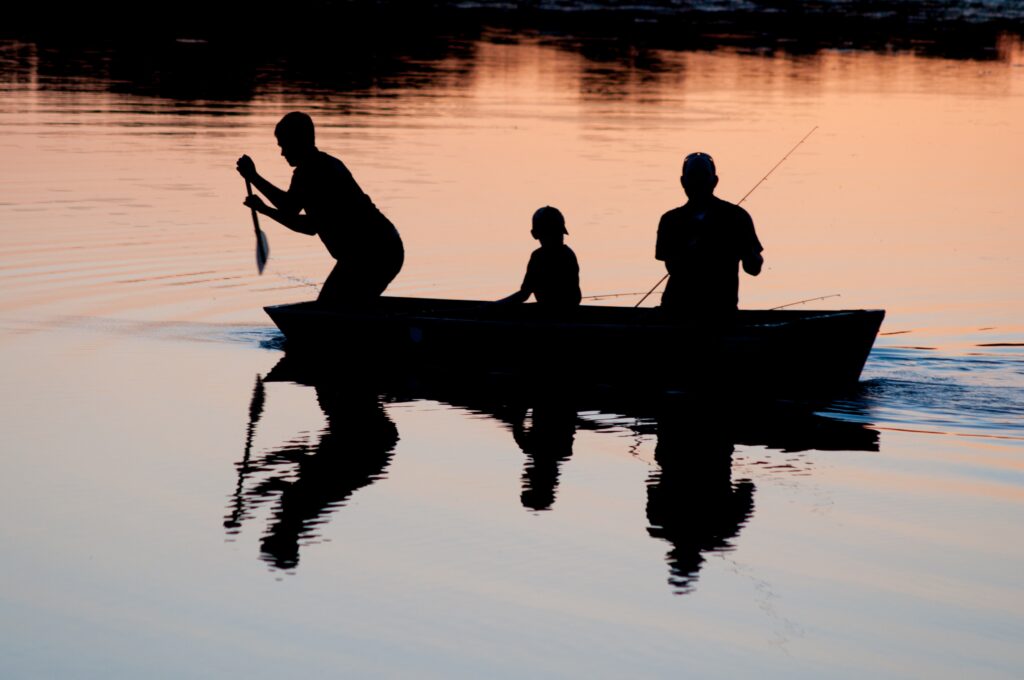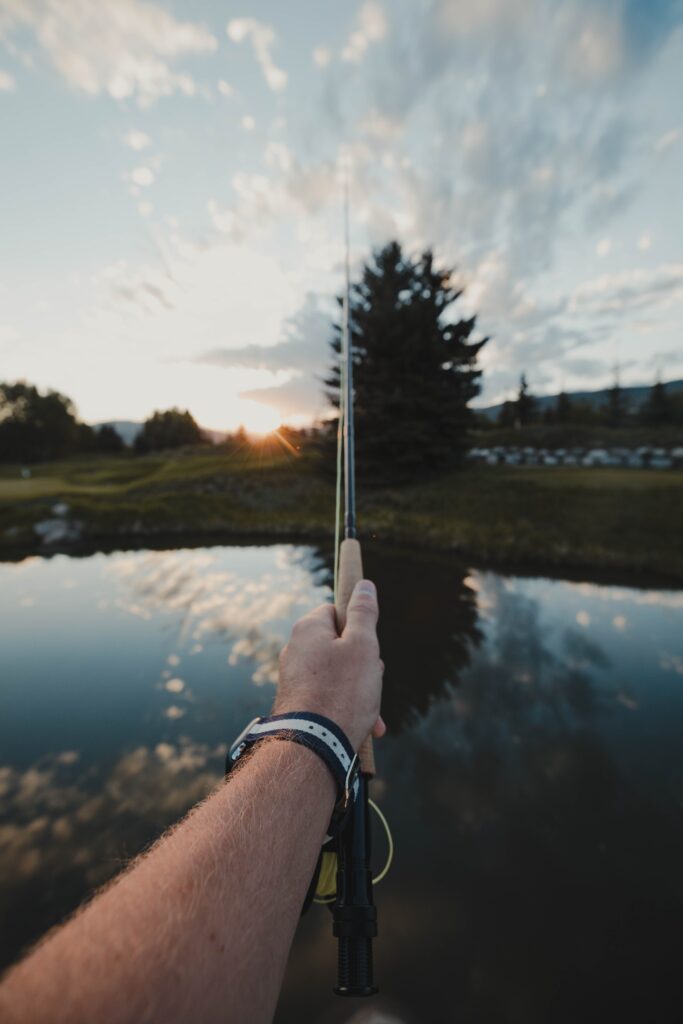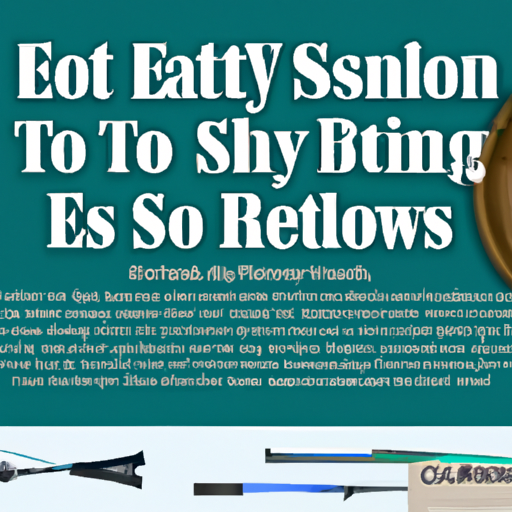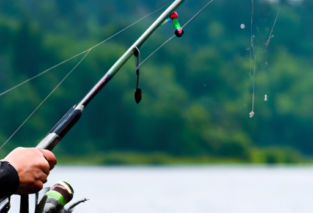Are you a beginner when it comes to fishing? Look no further! “Fishing Basics: The Essential Gear Every Beginner Needs” is here to help you get started on your fishing journey. This comprehensive guide will walk you through all the essential gear you’ll need to make your fishing experience a success. From rods and reels to bait and tackle, we’ve got you covered. Whether you’re planning to fish in freshwater or saltwater, this article will provide you with all the information you need to get started. So grab your gear and let’s dive into the world of fishing!

Rod and Reel
When it comes to fishing, one of the most important pieces of gear you will need is a rod and reel. There are different types of rods and reels available, each with its own advantages and uses.
Spinning rod and reel
The spinning rod and reel combo is a versatile option that is perfect for beginners. It features a reel mounted beneath the rod with a bail that allows for easy casting and reeling in of fish. The spinning reel also has a smooth drag system, which is important for when you need to give some line or reel one in. This type of rod and reel is great for light to medium fishing applications, such as freshwater fishing or targeting smaller saltwater species.
Baitcasting rod and reel
The baitcasting rod and reel combo is a popular choice among experienced anglers. It utilizes a spool that rotates as you cast, allowing for greater control and accuracy. While it may take a bit of practice to master the casting technique, the baitcasting combo is great for targeting larger fish and heavy cover situations. It provides more power and control, making it ideal for freshwater fishing such as bass fishing or even saltwater fishing.
Fly fishing rod and reel
Fly fishing is a unique and enjoyable way to fish, and it requires a specialized rod and reel combo. The fly fishing rod is designed to cast a lightweight fly line with an artificial fly. The casting technique is different from spinning or baitcasting, as you rely on the weight of the line to deliver the fly to the fish. The fly fishing reel is specially designed to hold the fly line and provide drag when needed. Fly fishing is popular for targeting trout and other freshwater species, as well as some saltwater species.
Fishing Line
Choosing the right fishing line is crucial for success on the water. There are different types of fishing lines available, each with its own strengths and weaknesses.
Monofilament line
Monofilament line is a popular choice for many anglers. It is versatile, affordable, and easy to handle. It has a good amount of stretch, which can help absorb sudden shocks and prevent the line from breaking. Monofilament line is also relatively invisible underwater, which can be beneficial in clear water conditions. It is commonly used for a wide range of fishing applications, from freshwater to saltwater fishing.
Braided line
Braided line is made up of multiple strands of fibers woven together. It is known for its high strength and low stretch properties. Braided line has a thin diameter, which allows for increased line capacity on the reel. It also offers excellent sensitivity, allowing anglers to feel even the slightest nibble. This type of line is ideal for situations where strong and sensitive, such as big game fishing or fishing in heavy cover.
Fluorocarbon line
Fluorocarbon line is made from a dense material that is nearly invisible underwater. It has a similar refractive index to water, which makes it difficult for fish to detect. Fluorocarbon line also sinks faster than other types of line, making it suitable for certain fishing techniques such as bottom fishing or finesse fishing. It is often used as a leader material, especially in situations where fish are line-shy or in clear water conditions.
Hooks
Hooks are essential for securing your bait and catching fish. There are different types of hooks available, each designed for specific types of fishing and bait presentations.
J hooks
J hooks are the most common type of hook and are shaped like the letter J. They are versatile and can be used with a variety of baits. J hooks are commonly used when fishing with live bait or for general applications. They are effective in hooking fish in the corner of the mouth, reducing the chances of the fish breaking off.
Circle hooks
Circle hooks are designed to rotate and set themselves when a fish takes the bait. They are commonly used in catch-and-release fishing, as they are less likely to cause injury to the fish. Circle hooks are effective for targeting larger fish species or when fishing with heavier tackle. They are widely used in saltwater fishing, especially when targeting bottom-dwelling species such as grouper or snapper.
Treble hooks
Treble hooks consist of three individual hooks fused together at the eye. They are commonly used in lures and artificial bait, providing increased hooking potential. Treble hooks are effective for species that strike and attack aggressively, such as pike or musky. It is important to handle treble hooks with care, as they can cause serious injury if not properly handled.
Baitholder hooks
Baitholder hooks feature two barbs on the shaft, which helps keep the bait securely in place. They are commonly used when fishing with live or natural baits that may be prone to falling off the hook. Baitholder hooks are versatile and can be used for a variety of fishing applications, from freshwater fishing to saltwater fishing. They provide a secure hold and increase the chances of hooking the fish.
Sinkers and Weights
Sinkers and weights are used to help keep your bait or lure at the desired depth and improve casting distance. There are different types of sinkers and weights available, each with its own purpose and advantages.
Split shot sinkers
Split shot sinkers are small, round weights that can be easily attached to the fishing line. They are commonly used for finesse fishing and adjusting the depth at which your bait or lure is presented. Split shot sinkers are versatile and can be added or removed easily as needed. They are ideal for situations where you need precise control over your bait presentation.
Egg sinkers
Egg sinkers are oval-shaped weights with a hole through the center. They are commonly used when fishing in strong currents or deep waters. The shape of the egg sinker helps prevent it from rolling or sliding along the bottom, keeping your bait in place. Egg sinkers are effective for a variety of fishing applications, from freshwater to saltwater fishing.
Bullet weights
Bullet weights are cylindrical in shape with a narrow end and a wider end. They are commonly used when fishing in heavy cover or vegetation, as the streamlined shape allows for smoother penetration. Bullet weights also provide a loud clicking noise when hitting rocks or hard surfaces, attracting fish towards the bait. They are often used in bass fishing or when targeting fish near structure.

Bobbers or Floats
Bobbers, also known as floats, are used to detect when a fish bites your bait. They are designed to suspend your bait at a specific depth and provide a visual indicator when a fish is showing interest.
Slip bobbers
Slip bobbers are designed to slide up and down the fishing line, allowing you to adjust the depth at which your bait is presented. They are commonly used when fishing in deeper water or when targeting fish that are suspended at varying depths. Slip bobbers are versatile and can be used for a wide range of fishing applications, from freshwater to saltwater fishing.
Fixed bobbers
Fixed bobbers are attached to the fishing line using a peg or spring mechanism, and they remain fixed at a specific depth. They are commonly used when fishing in shallow water or when targeting fish that are concentrated in a specific area. Fixed bobbers are easy to use and are ideal for beginners or those looking for a simple setup. They are often used in panfishing or when fishing with children.
Lures
Lures are artificial imitations of prey that are designed to attract fish and trigger a strike. There are different types of lures available, each designed for specific fishing techniques and species.
Crankbaits
Crankbaits are hard-bodied lures that have a diving lip attached to the front. They are designed to mimic the swimming action of baitfish or other prey. Crankbaits are typically used for freshwater fishing, especially when targeting predatory fish such as bass or pike. They come in different sizes, shapes, and colors, allowing you to match the local forage and conditions.
Spinnerbaits
Spinnerbaits are lures that have one or more spinning blades attached to a wire frame. The spinning blades create flash and vibration in the water, attracting fish from a distance. They are commonly used for freshwater fishing, particularly in areas with heavy cover or vegetation. Spinnerbaits are effective for targeting a variety of species, from bass to walleye.
Soft plastic baits
Soft plastic baits come in various shapes and sizes, including worms, creatures, and swimbaits. They are made of a flexible plastic material that mimics the texture and movement of real prey. Soft plastic baits can be rigged in different ways, such as Texas rigging or Carolina rigging, and they can be used in both freshwater and saltwater fishing. They are versatile and effective for a wide range of species, including bass, trout, and even saltwater species like redfish or flounder.

Bait
Bait is a natural or artificial substance used to attract fish and entice them to bite. There are different types of bait available, each with its own advantages and effectiveness.
Live bait
Live bait refers to using actual live organisms, such as worms, minnows, or crickets, as bait. Live bait is highly effective because it resembles the natural prey of fish and emits natural scents and movements that fish find irresistible. It is commonly used in freshwater and saltwater fishing, depending on the target species. Live bait can be purchased from bait shops or collected by anglers themselves.
Artificial bait
Artificial bait, also known as lures, are man-made imitations of natural prey. They come in various forms, such as soft plastic baits, crankbaits, spinnerbaits, or jigs. Artificial bait is designed to mimic the appearance and movement of baitfish, insects, or other prey. It is popular among anglers due to its versatility, durability, and ease of use. Artificial bait is commonly used in both freshwater and saltwater fishing, depending on the target species and fishing technique.
Tackle Box
A tackle box is essential for organizing and storing your fishing gear. It keeps everything in one place and allows for easy access and transportation. Here are some essential items to include in your tackle box:
Essential tools
A tackle box should include essential tools such as fishing pliers, line clippers, and a multitool. Fishing pliers are useful for removing hooks, crimping split shot sinkers, or cutting fishing line. Line clippers are handy for cutting fishing line and removing excess line. A multitool can come in handy for various tasks, such as opening split rings or tightening screws on fishing gear.
Extra fishing line
It is always a good idea to have extra fishing line in your tackle box. Fishing line can become damaged or weakened over time, especially when fishing in rough conditions or around sharp objects. Having spare fishing line allows you to quickly replace a damaged line and get back to fishing.
Extra hooks and sinkers
Having extra hooks and sinkers in your tackle box is essential. Hooks can become dull or bent, and sinkers can get lost or damaged. It is important to have a variety of hook sizes and sinker weights to accommodate different fishing situations. Having extra hooks and sinkers ensures that you are always prepared and can make adjustments as needed.
First aid kit
A first aid kit is an important item to have in your tackle box, as accidents can happen while fishing. It should include basic medical supplies such as bandages, antiseptic wipes, and adhesive tape. In case of minor injuries, having a first aid kit on hand allows you to treat wounds promptly and ensure your safety while fishing.

Pliers
Pliers are an essential tool for any angler. They are handy for a variety of tasks, from removing hooks to crimping split shot sinkers. Here are some types of pliers that you should consider adding to your fishing gear:
Long-nose pliers
Long-nose pliers, also known as needle-nose pliers, have a narrow, tapered tip that provides precision and control. They are useful for removing hooks from a fish’s mouth or for reaching into tight spaces. Long-nose pliers can also be used for bending wire or cutting fishing line. They are versatile and come in different sizes to suit your specific needs.
Split ring pliers
Split ring pliers are designed for opening split rings, which are commonly found on lures, hooks, or other fishing gear. Split ring pliers have a notched end that allows you to grip the split ring and stretch it open, making it easy to attach or remove items. They are handy for changing out hooks on lures or replacing damaged split rings.
Fish grippers
Fish grippers, also known as fish lip grips, are useful for safely handling fish. They have a trigger mechanism that allows you to grip the fish’s lower jaw, providing a secure hold without harming the fish. Fish grippers are useful when dealing with toothy or slimy fish that may be difficult to handle with bare hands. They also help prevent accidental injuries from fish thrashing or slipping out of your hands.
Fishing License
Before you head out to fish, it is important to make sure you have a valid fishing license. Fishing licenses are required by law in most areas and help support fisheries conservation efforts. They vary in cost and duration, and can typically be obtained online or from local licensing agents. It is important to familiarize yourself with the fishing regulations in your area and abide by the catch limits and size restrictions to ensure sustainable fishing practices. Fishing without a license can result in fines or penalties, so make sure to obtain one before your fishing adventure.
In conclusion, having the right gear is essential for successful fishing. From selecting the right rod and reel combo to choosing the appropriate fishing line, hooks, sinkers, and lures, each piece of gear plays a vital role in your fishing experience. Additionally, having a well-stocked tackle box with essential tools, extra line, hooks, and sinkers, as well as a first aid kit, ensures that you are prepared for any situation. Don’t forget to have the necessary pliers for tasks such as removing hooks or opening split rings, and always remember to obtain a valid fishing license before heading out. So, gather your gear, grab your rod and reel, and get ready for an enjoyable day of fishing on the water!





